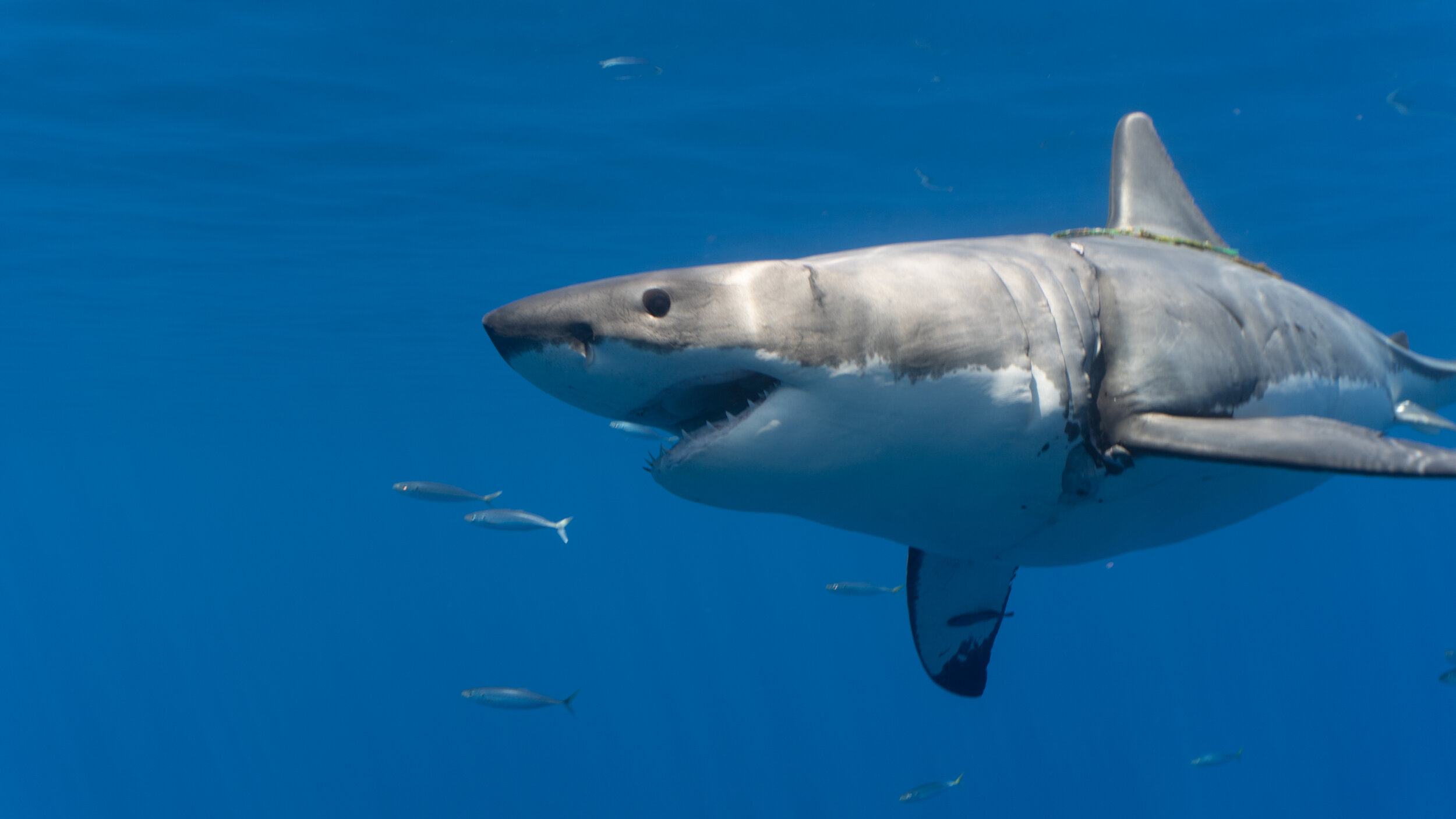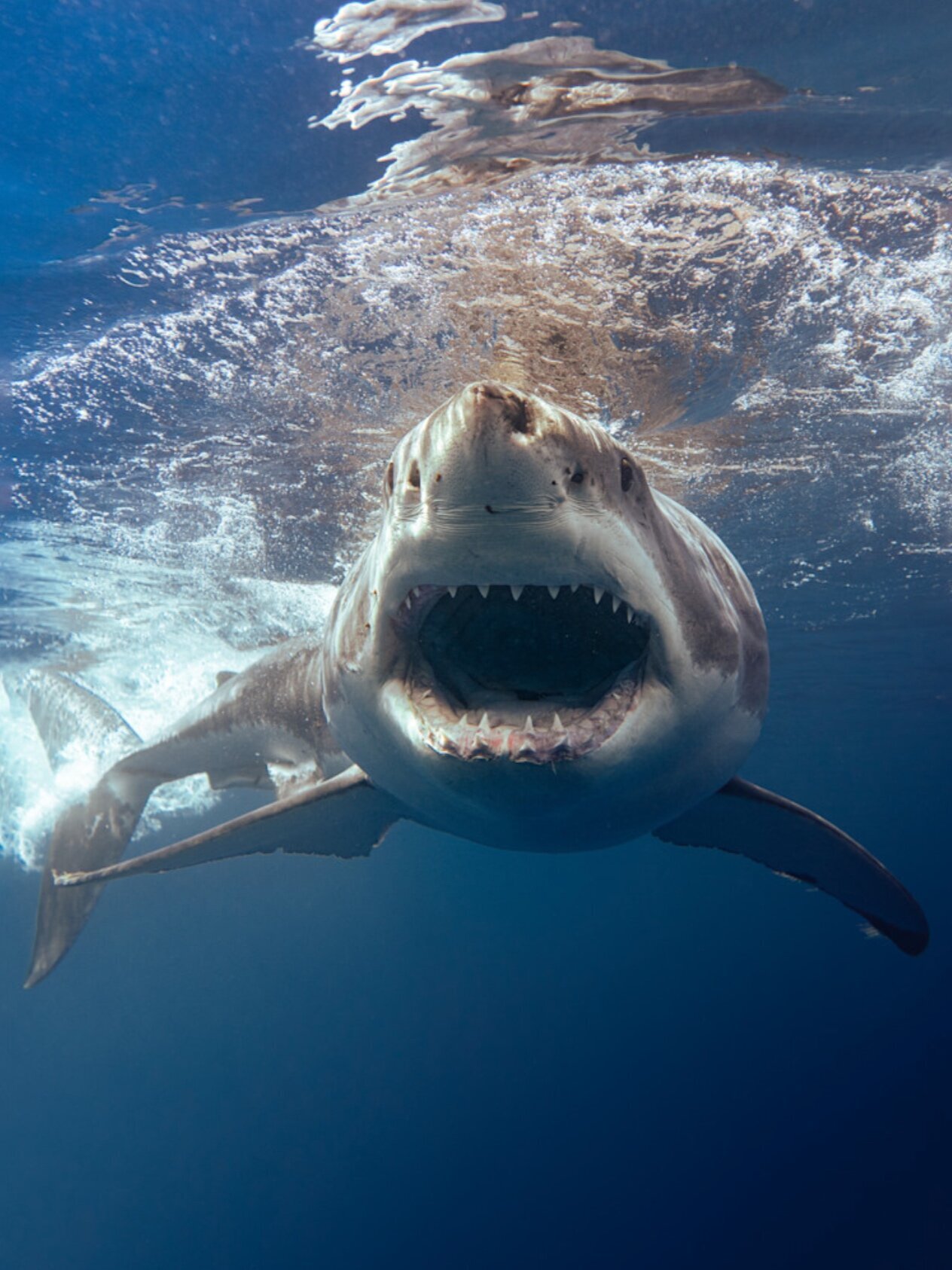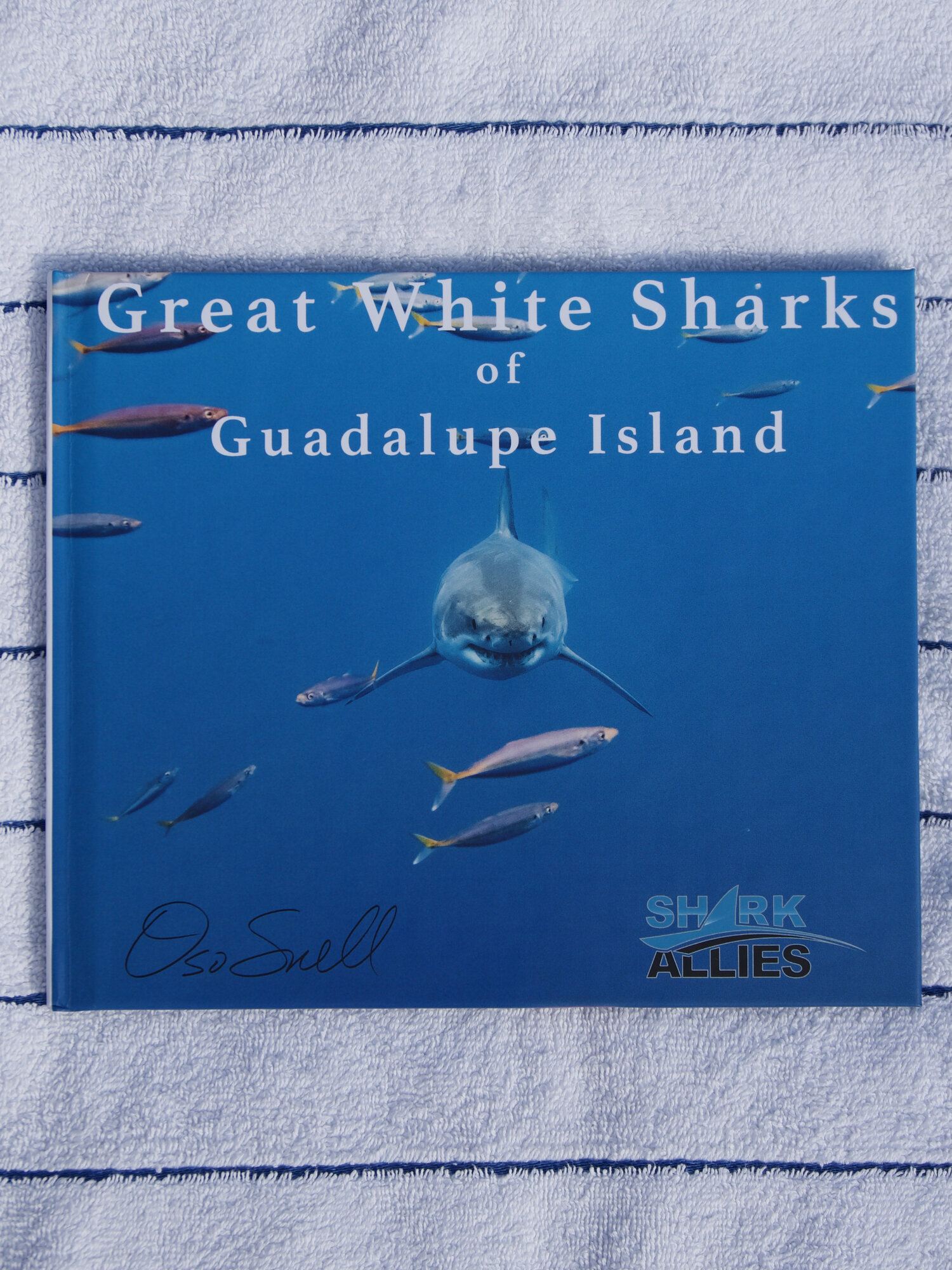Dive Into the Cages of Guadalupe
All photos by Laurel Irvine
In honor the dive season opening up (August to October) after pandemic closures, I get the great pleasure of presenting to you with a holistic view into my number one, absolute favorite destination on this blue planet – Isla Guadalupe. Situated nearly 150 miles off the coast of Baja California (roughly 24 hours by boat from San Diego), Guadalupe Island is famous for its out-of-this-world great white shark diving conditions and motivational conservation success stories. Today, the volcanic island serves as a Pinniped heaven and one of the only known migratory stopover destinations for Southern California’s iconic great white sharks (there is a separate California white shark population near the Farallon Islands).
Anchored at Guadalupe.
To appreciate each facet of Guadalupe’s natural beauty beyond the white sharks, you must first understand the island’s tumultuous beginning. Here’s a brief history to paint the picture…
1700s: The first records of Guadalupe Island appear as Russian and US seal fur traders discover it. The seal fur trade (and blubber oil) continues for the next 200 years, overexploiting the endemic Guadalupe Fur Seal and Northern Elephant Seal.
1800s: Guadalupe slips through the cracks of control under the Mexican government as the mainland faces a turbulent political climate.
1844: Guadalupe Fur Seals are pushed to the brink of extinction due to fur trading.
1870: The island is bought and sold in a series of shady deals, resulting in the formation of the Guadalupe Island Company. “GIC” quickly imports goats and sheep to the island for wool and meat. They also harvest the island’s white pine and cedar. To say that these introductions and harvests threw the ecosystem off its axis is an understatement. 30,000 feral goats destroyed the island’s natural vegetation, including important bird nests. Then 6,000 acres of forest were gone. What was once a biologically valuable and virtually untouched ecosystem (disregarding the seal populations), Guadalupe Island quickly turned into the stark, arid and barren landscape we see today.
1884-85: Northern Elephant Seal and Guadalupe Fur Seal populations are thought to be extinct. After realizing this, Mexico regains control of the island.
1894: Mexico places an armed caretaker of the island on Point Norte.
1922: More than 40 years after they were thought to extinct, Mexico protects the Northern Elephant Seal population that has developed around the island.
1928: Mexico goes even further, making Guadalupe a nature conservancy, one of the oldest in Mexico.
1975: Guadalupe is declared a Pinniped sanctuary.
2000: The first Guadalupe shark cage diving operation sparks a new era of conservation for the island (let the research begin!).
2005: Guadalupe is declared a biosphere reserve.
2008: The Mexican government and a group of NGO’s began eradicating the goats and sheep from the island for good.
Despite its remote location, Isla Guadalupe feels like home to me. This is largely because much of the life that frequents the island also resides in the Channel Islands off our coast in California. As a pinniped rehabilitator, it is comforting to see California Sea Lions, Northern Elephant Seals and Guadalupe Fur Seals playing in the crystal blue water. And, if you’re lucky enough, you may see a sea lion taunting its great white predator! After a big day of shark diving, you can hear the sea lions and seals hooting and hollering all together from the shore, as if they’re begging you to swim over to join the fun. Amongst the local pinnipeds and white sharks, there is a bounty of yellowfin tuna, yellowtail, green sea turtles and Pacific Jack Mackerel that perfectly photobomb your best shots. What makes Guadalupe such an exotic adventure is the movement of cool, nutrient-rich water which promotes phytoplankton production, thus attracting both coastal and deep-water species. The island rises from the deep ocean, sitting perfectly between warm southern currents and a cool northern upwelling, supporting massive schools of fish and life. And we are the audience.
Pacific Jack Mackerel’s stealing the show.
Now you have more knowledge about the island and its inhabitants than most divers that visit, we’re ready to jump into the best part - the great white sharks. These kings and queens of the Pacific gather at Guadalupe from June to January each year on a tight schedule. The male sharks show up early in the season, and in the greatest numbers. Once they are no longer considered juvenile feasting on sting rays in the shallows of Southern California’s bays, the young great white males are welcomed to the island by their elders. According to CSULB Shark Lab, some of the younger tagged sharks have been detected at Guadalupe after they reach 3 years old. Male white sharks are not as large as their female counterparts, reaching 11 to 13 feet on average. What they may “lack” in size, they certainly make up for in energy. The males are feisty, putting on an underwater show, darting from side to side in front of the cages. If you’re looking for action, this is it! The varying behaviors of a lot of sharks in your viewfinder at once makes for an adrenalin rush like no other. Late summer is your time to visit; as it starts to wind down, the females make an appearance. And these are not just any females, but those that have reached sexual maturity at around 15 years of age, potentially seeking out a mate. Although it has not been proven that Guadalupe is a mating ground for these mysterious creatures, it is a widely adopted theory based on the fresh mating scars some scientists and divers have witnessed. Adding to this theory is the fact that females stop by the nearshore rookeries of Guadalupe every other year, which is in step with their longer gestation periods (18 months). During their pregnant months, the female great whites are thought to travel to the cooler waters of the North Pacific. The females command your attention one at a time, moving slowly past the cages to give you the best look at their jaw-dropping size and grace, just like they know they are part of an exquisite parade of power in nature.
Two sharks in one frame is a common occurrence during the early fall expeditions!
Importantly, Guadalupe Island happens to be on the migratory path to SOFA (Shared Offshore Foraging Area), also known as White Shark Café (sound familiar?!). Every February, the great white shark populations from Southern and Northern California meet between Baja and Hawaii in the ocean’s equivalent of an arid wasteland. There are many theories as to why SOFA exists, but it remains a mystery to this day. We lovingly like to think that it is the Spring break for the Northern and Southern California white sharks since they typically do not intermingle. Scientists believe that the warmer deep-water area near Hawaii could either be for mating or for finding food. It has been observed that once they reach SOFA, the great white sharks dive up to 3,300 feet. And scientists have tracked the tagged males doing this as often as dozens of times per day. This behavior is yet to be confirmed as mating, foraging, or something completely different.
At first look, you know Guadalupe is an extremely special place to encounter white sharks because of the warm, crystal blue water with an average visibility ranging from 100 to 150 feet. But there truly is no other place like it in the world. Nowhere. Sure, Neptune Island, Seal Island and the Farallon’s are all A-list hotspots as well, but the water is frigid and murky, making encounters quick and exhilarating. What you will find out – if you have the special chance to visit Guadalupe – is the incomparable benefits of this clear water arena, in addition to physically being able to stay in the cage for longer periods of time. The biggest benefit of being here is a chance to observe the ocean’s most iconic apex predator for hours on end, day after day, on their own terms and in their natural habitat. It is the most humbling experience to lock eyes with the ice blue iris of a great white shark each time they make their way around the cage or as they emerge from the schools of fish in a moment of mutual respect and recognition. They give you a new insight into the fact that each individual great white shark has a very distinct personality, motivation and history – where it’s been, what it’s encountered, how it has survived.
CSULB Shark Lab receiver to ID tagged sharks in the area.
Another benefit of these picturesque conditions is the ability to identify each white shark, catalogue never-before-seen individuals and track frequent visitors. Many incredible organizations, scientists and universities dedicate their studies to the sharks of Guadalupe Island, notably Dr. Chris Lowe and his students at CSULB Shark Lab, as well as Marine Conservation Science Institute.
As the day ends and the sun starts to set on the cages, divers gather in the galley to compare their footage, upload it to MCSI’s database, and figure out who they encountered beneath the surface. Again, such pristine diving conditions make for efficient and clear identification, adding to scientific databases…and the sheer fun of the adventure. Did you know that below every white shark’s gill, on each side of their bodies, there is a pattern where the grey meets the white? This pattern is particular to each individual shark much like our own human fingerprints or the spots of a whale shark. That along with their dorsal fins, other colorings and body scars, are ways to accurately identify each great white. Picking out individuals and then getting to know each one makes the underwater experience even more engaging each time they swim by – like painting a portrait of the unique and special individual fish that so many people think is a mindless killing machine.
‘Ropey’ the Great White Shark on a 2018 expedition with Horizon Charters.
There is one particular shark who struck a chord with all of us on our 2018 expedition with Horizon Charters – we call her Ropey. Tagged in Guadalupe in 2017, when the tagging crew first found her, she had a closed circle of fishing rope embedded in her tissue, surrounding the circumference of her body around her gills. They cut the rope and opened the circle so she could grow into it a little more; unfortunately, the rope was already so deep in some parts of her body, it had created a black scar. Ropey hung out with us every single day we dove, and it’s no secret she stole ALL of our hearts. Despite her weak tail and extremely skinny frame, she caught tuna, was always smiling (yes, smiling) and even breached once. She was 11 feet long, so at least we knew she was eating and taking care of herself out in the big blue when our free tuna heads weren’t around. Ropey is special to the Shark Allies team, and very much to me. Not only because we had the pleasure of getting to know her as an individual, but because of her strength and perseverance. And maybe because she seemed to like us for helping her. We see sea turtles, dolphins, whales and pinnipeds stuck in fishing gear all too often, but it was even more shocking to see an apex predator restricted because of human impact.
Was the bumpy 24-hour trek to the middle of the ocean worth is? Yes, no question. Arriving at this magnificent island in the evening with the warm, golden sunset light, is worth every penny. It’s simply life changing. You can take advantage of this perfect setup to watch every shark that passes by, listen to the distant party of pinnipeds, gaze into the galaxy of shooting stars, and then awaken in the morning to the exhilaration and anticipation of rolling out of your bunk and into the shark cage! The Pacific Jacks think that it’s all a show is for them, and the orange morning light turns into the long underwater sunrays of the afternoon. Guadalupe is the treat of a lifetime.
A curated selection of products celebrating Guadalupe Island are available on the Shark Cafe shop! 100% of proceeds supports Shark Allies and shark conservation projects around the world.














